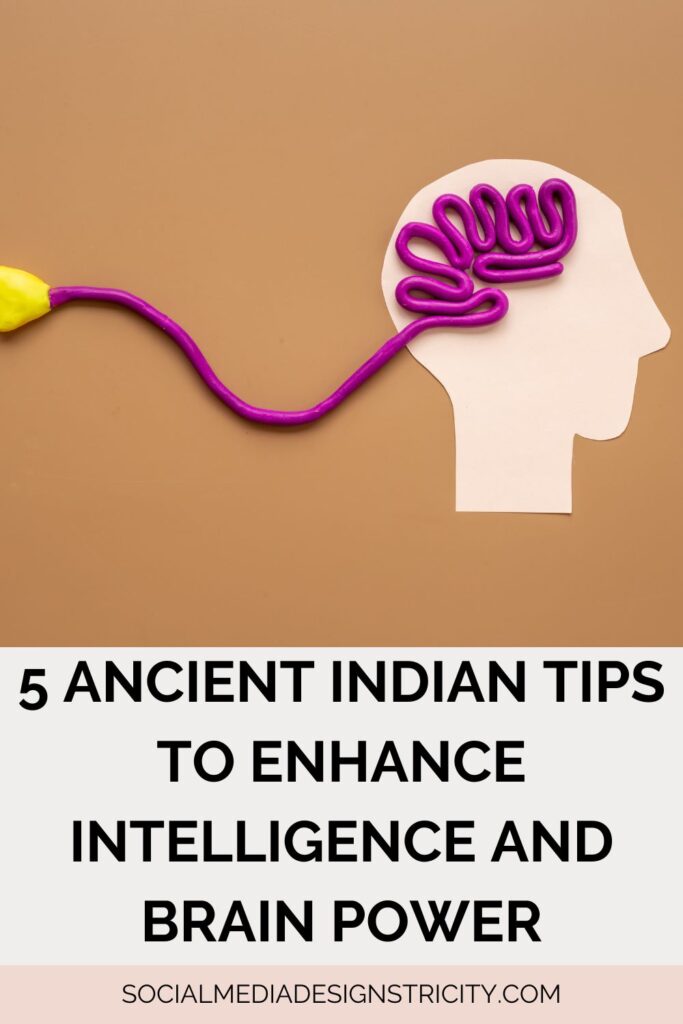Discover 5 ancient Indian tips to enhance intelligence and boost brain power naturally for improved mental clarity and focus. Pursuing new heights of cerebral capacity has been a pursued goal ever since the days of antiquity, particularly in the Indian subcontinent. For thousands of years, Ayurveda, Yoga, and other Indian Traditions & Philosophy have had effective methods to enhance the cognitive faculties of individuals. Such techniques which were somewhat considered ahead of time are still applicable since they provide practical ways of bettering one’s ability to memorize, concentrate, and think. Let’s look into the different ways and practices that may help in enhancing the brain’s power.
Ayurvedic Herbs: Mother Nature’s Brain Boosters
Mind cultivation and enhancement have been part of the Indian tradition long back. Some prominent ayurvedic herbs which are quite recognized in improving brain health include Bacopa monnieri (Brahmi) and Ashwagandha. Brahmi has also been increasingly popular among people due to its ability to relieve stress, improve memory retention, and maintain concentration. Certain neurochemicals present in the herb help with learning and memory consolidation.
Another ayurvedic wonder that could be found in Ashwagandha; as Ashwagandha has been known to work effectively as an adaptogen, there still is an importance of the body’s ability to handle stress in affecting the brain functions. Memory and decision-making skills are ones that chronic stress may damage but with the help of Ashwagandha, mental clarity is attainable, ensuring that the brain continues to cope well with a high amount of pressure.
Meditation, like all Indo-American practices, has its root deep in Indian culture. It has existed in history as a practice of adjusting oneself physically and mentally to silence all aspects external to one’s existence. After strategizing and practicing physical alignment, self-quietness, and mental ohm chanting, the thought process moves to awareness meditation. Meditation as defined by our elders, is the art of stilling or calming the mind and surrounding senses.
The ability to even calm the mind has been said to seem unattainable, and out of reach to the most sophisticated individuals outside of asylums. This incapability can take such a high form of architecture in society, that it even deludes individuals who acquire appreciation and acceptance from others.
Such attention went to summarising individuals of history, and modern eradicator scientists have proven the four stated components of meditation and awareness concentration to build its foundations. These being concentration practices such as Dhyana, practices that promote non-dual awareness like Vipassana, as well as active or passive attention, along with body observation and participation in hand gestures known as Mudra. These levels, in hand, significantly improve knowledge cognition, concentration spans, and the mind in general.
Neuroscience speaks volumes as to which there’s been continuously boosting evidence supporting strong correlations with a patient’s enhanced memory, even their sense of emotion. All from a general practice of mindfulness and meditation. In addition, there are benefits to mental calmness as even stated in modern-day journalism, due to stating distractions to others as rational thinking, that enhances problem-solving skills improving all in positive mannerism.
Yoga: Bringing Harmonious Energy and Functionality to Mind and Body and Overall Wellness and Well Being.
One of the significant reasons yoga is so helpful for these practices is that they are centered around achieving healthy relationships through body and life integration. There are different indicators for retaining equilibrium on every level as discussed earlier in the article. Some yoga poses such as Padmasana, Sarvangasana or Shirshasana have shown to increase levels of neuron in the brain, thus reviving cellphone-like connections.
And whereas all of the previously stated techniques are understood, there is a particular breathing technique called Pranayama that helps utilize brain neurons. Oxygen supply can only be improved through more focuses and healthy levels of pressure as stated above, while cognition interference can also be enhanced. It should then be believed that regular exercising should be a lifestyle approach as thee intensity on the physical level directly impacts the balance one can maintain on a mental level.
The Significance of a Sattvic Diet
A Sattvic diet in Ayurveda is believed to enhance one’s mental and emotional health as much focus is placed on natural and non-complex food items. Nuts, seeds, fresh fruits, and vegetables, milk, whole grains, and ghee are some of the common foods that form a Sattvic diet owing to the brain food stamp.
A Sattvic diet can be described as consisting of pure, fresh, and organic foods. Foods that are abundant and natural have high emotional and mental benefits. On closely looking at a typical Ayurvedic diet, it seems to be quite nourishing for the brain as well as there are abundantly rich foods. It includes nuts, seeds, whole ‘ghee’ which is clarified butter, fruits, vegetables, and different varieties of grains.
Ayurveda places special emphasis on ghee.
Ghee is primarily made of healthy fat which is rich in nutrients and beneficial in supporting the nervous system and improves cognitive performance. Modern science has also endorsed the positives of these diets as they are considered to be “brain foods” which are high in omega-3, antioxidants, and vitamins.
Mantras and Other Sound Related Therapy:
Using Frequency and Vibration Assisted Healing. Stated in the ancient Indian texts, Indian culture has always had perfected folklores that incorporated chanting and singing words that helped boost performers’ mental frequencies. Words that can be recited such as “om” or any other alterations of it appealed to certain parts of the human brain responsible for memory and regaining lost attention through different focuses.
Such sound patterning creates calming effects that help focus the mind and depress tension, balancing the brain waves. This results in an ideal environment for the learning and storage of information. Today, sound therapy applies to a high degree these principles, using frequencies for relaxation and enhancement of the cognitive performance.
Invaluable ancient India practices for cognitive training
Well-established procedures from ancient India do wonders in enhancement of brain power and intelligence in a natural way. Incorporating Ayurvedic herbs, practicing meditational and yogic disciplines, maintaining a sattvic lifestyle and practicing sound therapy regularly helps in developing cognitive functions and gaining mental serenity. These ancient practices are not only effective in increasing intelligence, but also in enriching health, which makes them relevant even now, after thousands of years of existence.
Upon practicing these ancient methods, constructing blocks for the mind is achievable which brings forth creativity, concentration and mental strength in the present world.


